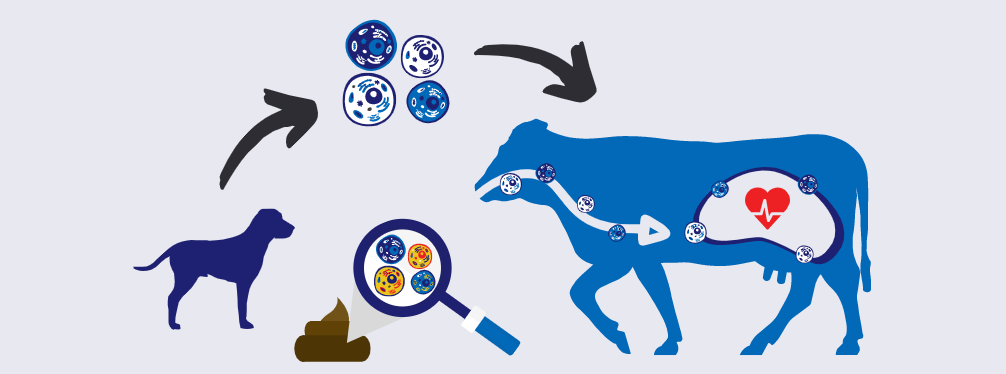Why is it so important to keep dogs under control around livestock? We talk about Neospora Caninum, one of the biggest causes of abortions and stillbirths in cattle.
What is Neospora?
Neospora Caninum
Neospora Caninum is a protozoan parasite, a single-celled microscopic animal which feeds on organic matter such as other microorganisms or organic tissues. Contracting the parasite can often lead to abortion in cattle. In fact, Neospora has been the most common cause of bovine abortion in UK in recent years.
Neospora caninum does not appear to be infectious to humans. However, Neospora caninum can cause serious health problems in dogs, including neurological signs, especially in congenitally infected puppies, where it can form cysts in the central nervous system.
There is currently no vaccine or recognised licensed treatment for cattle.
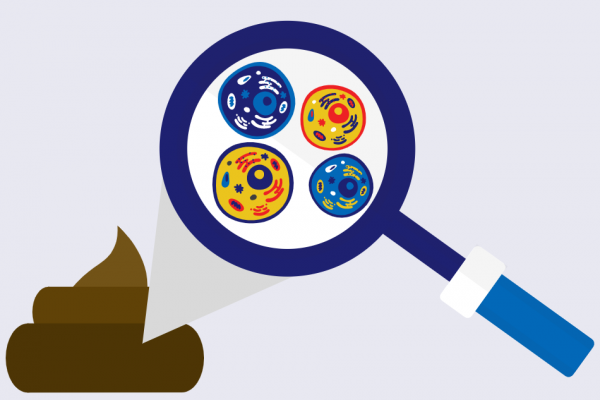
Transmission
Neospora was first detected in canines (dogs), identified now as the “definitive” host of the parasite. If a dog eats infected meat and contracts the parasite, the organism can invade and multiply within its new host’s gut cells.
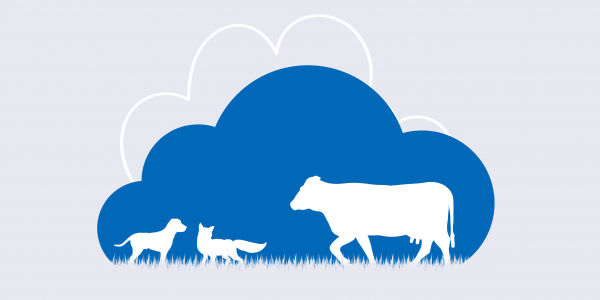
Over the next few days, the parasite will mature and begin to reproduce, distributing Neospora oocysts (or eggs) in their host’s faeces.
Usually, a dog’s immune system will control the infection within a few weeks and stop shedding oocysts. Dogs can contract the parasite multiple times, however, in subsequent infections, the immune system is better equipped to control the parasites quickly, significantly reducing the number of oocysts the animal sheds. As a result, shedding is mostly seen in younger dogs, after their first exposure to the parasite.
Neospora oocysts can survive outdoors for many months and be a source of infection for many other host species, including cattle.
Transmission routes
Horizontal transmission:
Dogs shed infective oocysts into the environment through their faeces. The oocysts can then survive in water and soil, long after the faeces have decomposed. The cattle are “intermediate hosts” and will become infected when consuming contaminated feed or water.
Remember: Dogs can become re-infected if they consume raw meat or placental tissue from infected cattle, which restarts the cycle.
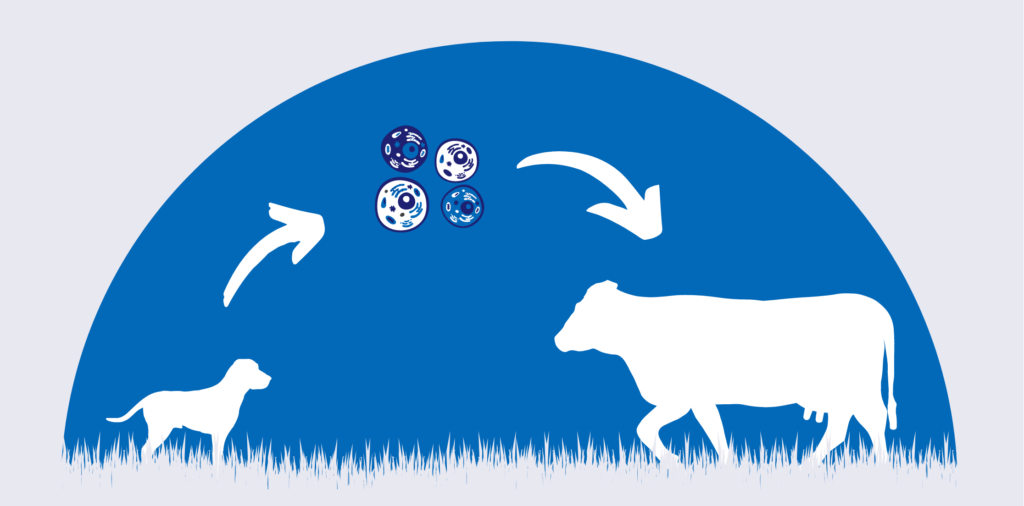
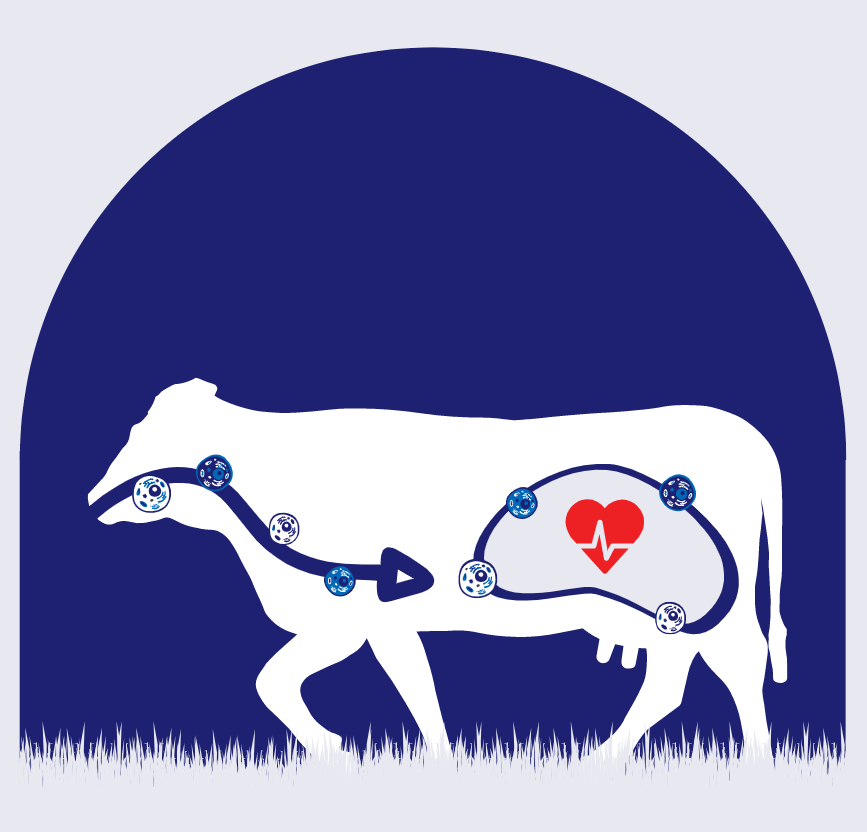
Vertical transmission:
When the parasite is transferred from the dam to her foetus during pregnancy. This is the most common route of transmission.
Once a cow or calf is infected with Neospora, they remain persistently infected for life. Persistently infected breeding dams will pass the parasite across the placenta of their calves. Due to this transmission, infected dams are between 3x and 7x more likely to abort in comparison to uninfected cattle.
Transmission from mother to calf (known as vertical transmission) is arguably the most important concern. Around 95% of calves born to mothers with antibodies to Neospora will have been infected in the womb.
Diagnosing Neosporosis
Early diagnosis can save you a huge amount of time and financial cost. Work with your vet to quickly identify any infected animals:
- Submit organic material from aborted foetus and placenta to appropriate testing facilities (parasite can be detected in the brain, heart and skeletal muscles of the foetus).
- Blood sample the dam to test for Neospora antibodies.
- Blood sample the calf at less than 1 week old.
- Rule out other causes of abortion – e.g. leptospirosis, salmonella, BVD, genetic abnormalities and toxicity.
Reducing the chance of horizontal infection
Some infection-reduction strategies may be expensive to achieve, however, the financial cost of neosporosis far outweighs the cost of eliminating it from the herd.
Here are some of the strategies to help you prevent the spread of Neospora on your farm:
1. Distance from the definitive host (or source).
The simplest way to reduce the transmission of Neospora Caninum is to keep cattle (and other susceptible animals) away from dogs and foxes. It is particularly important to protect and cover your cattle’s food and water sources as this is the main pathway for Neospora entering your herd.
Manage public rights of way appropriately, displaying clear signs of the risks to cattle and dogs and reminding dog walkers that they must remove dog faeces appropriately. Also minimise your cattle’s usage of fields which have public right of ways. Pre- and peri-parturient animals (animals in the period immediately before and after calving) should not be placed in at risk pastures.
If you have a farm dog, be alert for infection. If your farm dog contracts the parasite, he will only shed oocysts for 2-3 weeks, from 3-9 days after infection. If a farm dog is positive for Neospora antibodies, it is unlikely to be shedding oocysts.
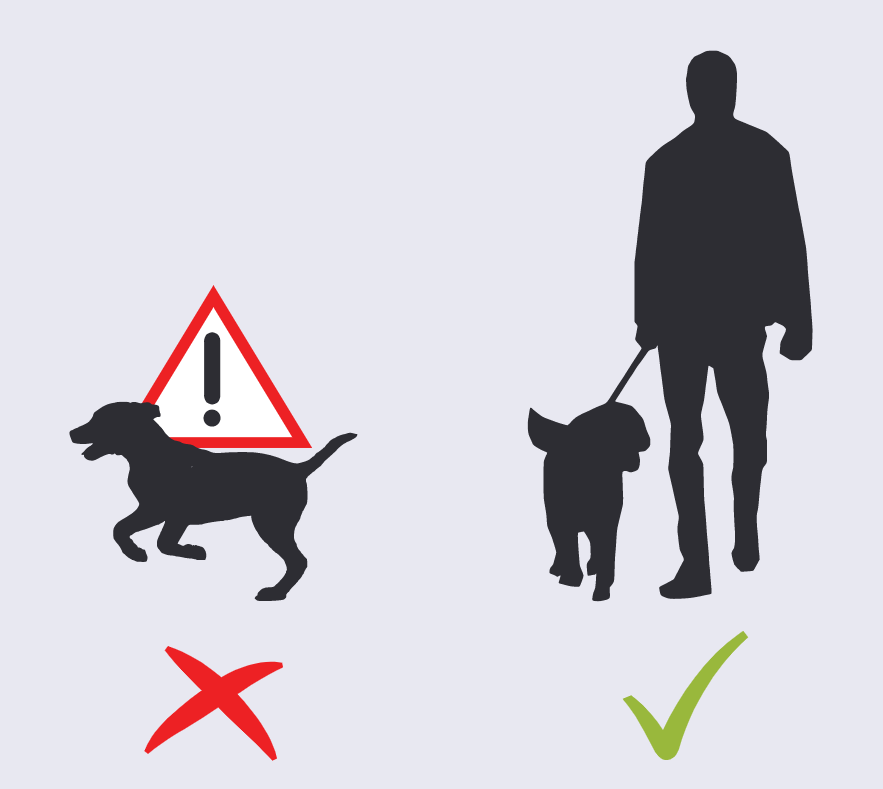
2. Identify infected cattle.
All infected cattle can pass the parasite on to their calves. Identifying infected cattle can help you to manage the transmission of infection through your herd. Additionally, cattle with antibodies are 20x more likely to abort between 90 and 270 days of pregnancy than cattle without antibodies.
If you choose not to cull seropositive cows, ensure that you only breed them to beef bulls. Heifers with antibodies should be sold for meat, not bred.
3. Maintain hygiene standards at calving.
Dogs should not be permitted near cattle around the calving time, nor allowed in the calving area. It is essential to dispose of placental membranes and aborted or dead calves in responsible ways, before dogs can ingest contaminated tissue. Any abortion material should be promptly identified and removed. We recommend informing your vet.
Prudent biosecurity should be observed at all times.
4. Screening.
Screen any bought-in animals that may be carriers.
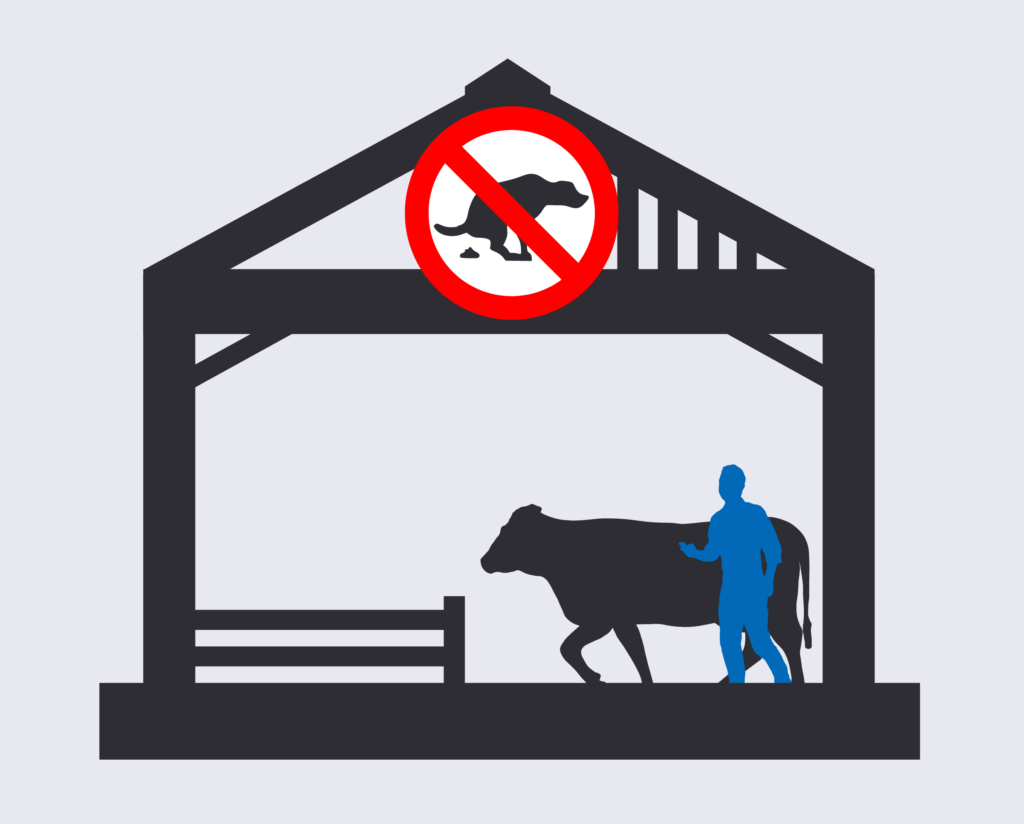
Reducing the chance of horizontal infection
1. Identification and choosing a solution
Identifying infected animals (using blood antibody tests). Once identified, screen related animals (i.e. dams, sisters, and other related progeny on farm) to halt any further transmission.
2. Spread prevention
All animals that are antibody positive are a considerable risk factor in spreading infection on farm and culling should be considered. Antibody positive animals should not be used for rebreeding and/or replacement production on farm. If culling is not possible, finishing the animal for slaughter may be an appropriate option.
3. Keeping infected animals
Some dairy farms will keep antibody-positive animals and use beef semen on these animals. This should be done with caution as it carries a considerable risk of allowing horizontal transmission and further infection to dogs, allowing the disease to establish on farm.
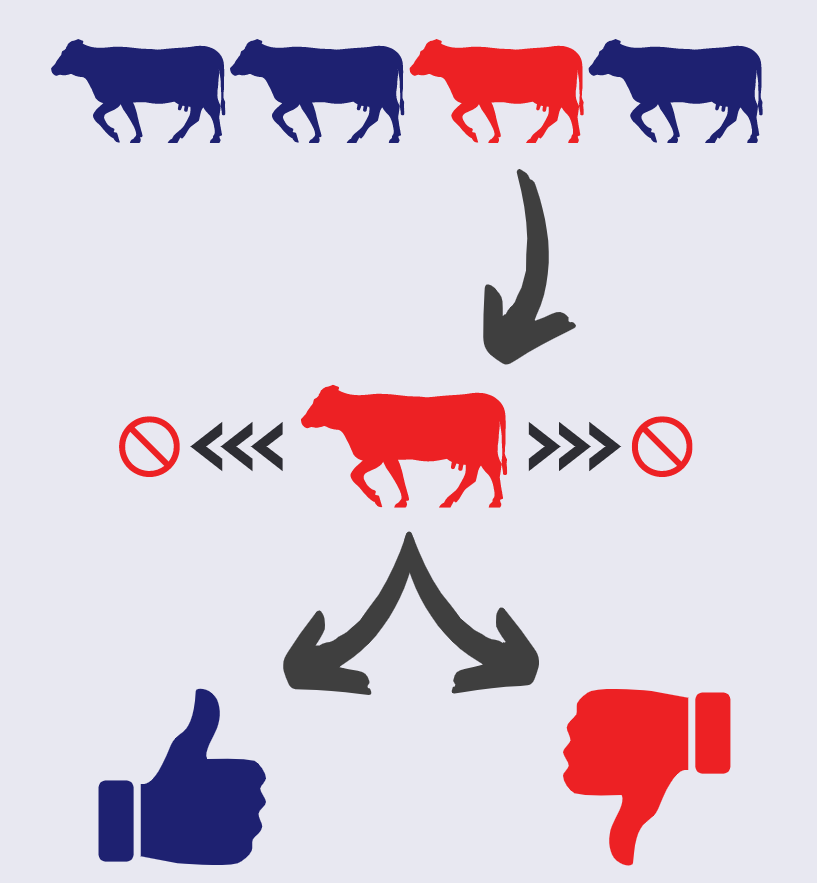
Main takeaways from this article
There is no treatment for Neospora infections in cattle. However, current research is looking to identify the possibility of vaccine production in the UK.
Infection can enter a herd either through infective dog faeces contaminating feed, pastures or water or by the introduction of infected animals into the herd. This is called “horizontal transmission”. It is perpetuated by “vertical transmission” between the dam and calf. This transmission can also be conducted by dogs who may be infected via the ingestion of dead calves or placentae.
Control of the disease requires a combination of careful biosecurity measures and the rapid identification of infected animals which, once identified, should be removed from the breeding herd. The public can help with this control by avoiding fields with cattle whilst dog walking and ensuring that dog mess is cleaned up appropriately.

